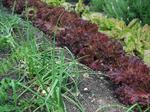Home Vegetable Growing
Even in today’s complex and technology-driven society the hunter-gatherer instinct is strongly present within most of us. Growing edible plants and creating beautiful garden spaces is a way that we can keep in touch with nature and the simpler joys of life.
- Be self-sufficient
- Grow for yourself and others
- Pick fresh 'clean' vegetables from your garden
ACS student comment:
Great course, tutor was really good with explaining and marking. [She] gave me new ideas for my garden and hints for it too. Learning so many new things about
growing different vegetables, how to grow them and what to do. All about soils and garden plots.Kathryn Crossfield - Home Vegetable Growing

Lesson Structure
There are 8 lessons in this course:
-
Introduction
-
Cultivation and Planting
-
Review of Major Vegetable Varieties
-
Pest, Disease and Weed Control
-
Hydroponic and Greenhouse Growing
-
Lesser Grown Varieties and Herbs
-
Irrigation
-
Harvesting, Storing and Using Vegetables
Aims
-
Identify a range of different vegetables
-
Determine sources and significance for information on vegetable growing
-
Describe the planting and cultivation of a range of different vegetables.
-
Describe production of some of the varieties of vegetable which are widely and commonly grown by home gardeners.
-
Evaluate and determine treatments for a range of common pest, disease and weed problems that affect vegetables
-
Determine and describe methods for producing a range of vegetable crops out of season.
-
Describe production of some of the varieties of vegetable which are less commonly grown by home gardeners.
-
Determine and describe ways of managing the water needs of vegetables in a home garden.
-
Describe when and how to harvest different types of vegetable crops.
-
Describe a range of methods for storing and using vegetables after harvest.
Why grow herbs and vegetables?
 Watching plants grow from seed to harvest and knowing that the armful of vegies and herbs you have just gathered for the evening meal will be on the table within an hour or two of harvest can be an exciting and satisfying experience.
Watching plants grow from seed to harvest and knowing that the armful of vegies and herbs you have just gathered for the evening meal will be on the table within an hour or two of harvest can be an exciting and satisfying experience.
There are lots of other reasons to grow vegetables:
- You save money.
- You have the satisfaction of being self sufficient.
- You know what you are using (you can never be sure that purchased products are pure and uncontaminated).
- You have a reliable supply of preferred varieties.
- Your food is fresher.
- Just for fun!
 The most obvious reason to grow veggies or herbs is to harvest and use them but that isn’t the only reason. Many vegetables and herbs can be just as attractive or functional as the ornamental and amenity plants we grow.
The most obvious reason to grow veggies or herbs is to harvest and use them but that isn’t the only reason. Many vegetables and herbs can be just as attractive or functional as the ornamental and amenity plants we grow.
Using herbs and veggies for better visual impact is simply a matter of plant selection and arrangement. In the past, when almost every house was on a quarter-acre block, vegetables were grown in separate beds in the backyard, with each variety planted in neatly spaced rows. These days few householders have the space or time to devote to this style of gardening, so it makes sense to grow edible plants alongside ornamental varieties. For example, a bed of edible and ornamental plants could include perennial lettuces as edging plants, climbing peas on tripods, clumps of rainbow chard and leafy parsley for colour and texture, backed by a screen of sweet corn. There are endless possibilities of combinations – a task made easier each season’s release of exciting new compact and colourful varieties.
Vegetables and herbs can also be used to improve the backyard environment. Planting green manures and using organic mulches and composts will improve soil fertility and help to control erosion. Problem soils, such as excessively wet or dry soils, can also be improved by choosing varieties adapted to those conditions.
 In a small but important way, growing vegetables will increase the biodiversity of your garden – the vegie patch will be a haven for bees, birds, lizards and other animals in need of food, water and shelter.
In a small but important way, growing vegetables will increase the biodiversity of your garden – the vegie patch will be a haven for bees, birds, lizards and other animals in need of food, water and shelter.
Can You Be Self Sufficient on an Average Home Site?
It’s possible to provide for many of your needs, but you may need to modify your expectations.
If you want every luxury that modern society can offer, then you are going to need more than what your garden can give you, but if you are prepared to be only part self sufficient or to live with less, then go for it.
What you produce from your garden will depend on the amount of space that you have. Obviously the larger the property, the more potential you will have to produce a large variety of crops. Large properties can support a range of fruit trees, vines, vegetables, herbs, grains and even hay and straw, as well as animals and chickens. The smaller the property, the more thought you will need to give to what you do and don’t grow. Ask yourself "
what would I like to produce?" Then take it from there.
Enrol today, start on the path to growing your own
Home Vegetable Growing is studied by distance learning. You study online with the support of our expert tutors.
If you have any questions, please get in touch by -
Phone (International) +44 (0) 1384 442752, or (UK) 01384 442752, or
Email us at info@acsedu.co.uk, or use our FREE COURSE COUNSELLING SERVICE - connect with our highly experienced tutors, they will be pleased to hear from you.
